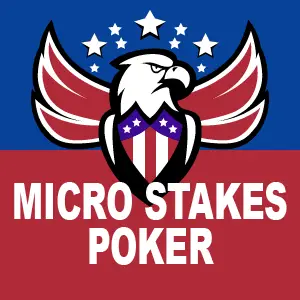Fast Track To Success – Lesson 4

Micro Stakes Poker (4)
- Managing your variance is very important, especially if you’re not a winner yet
- Different game types have different rates of variance
- The goal needs to be to keep your losses to a minimum while you are learning
Next You Have To Choose An Appropriate Game Type
So now that we have a little feel for how we’re going to play the typical categories of opponents that we’re likely to see at smaller stakes poker, it’s time to decide what type of game we should be looking to play. There are two main types, which are cash games and tournaments, although I’d like to further classify tournaments into two types, which are sit and go’s and multi table tournaments. While both of these are in tournament format, there’s quite a bit of difference between the two so we really need to look at them separately.
The main difference between these two types of tournaments is that multi table tournaments have the highest variance of any form of poker, while single table tournaments or sit n’ go’s have the lowest. The reason why this is so important, especially to players with smaller sized bankrolls, is that the lower the variance, the higher stakes you can play safely relative to your bankroll size. This means more progress and more expected profit over time.
How Fast You Lose Depends On The Game You Select

This can also mean smaller expected losses if you’re not a winning player yet, and the reason is the same, which is that the bad luck streaks that you get are less of a potential of your total bankroll, which is what variance essentially is. So you should be set up to handle even the worst streaks of bad luck you can run into. With cash games that can be quite a few buy-ins, simply from the cards running cold. In an hour session alone you can lose several buy-ins if things are running bad, and even more importantly, you can get yourself in a hole where it may take you a long time to make up for these bad streaks with your normal hourly win rate.
So for instance if you normally win 3 big bets an hour, and you go on a streak where you lose 10 buy ins, which isn’t that unusual, that’s down 500 big bets. So we don’t have to do the math here to figure out we’re talking a long time here. Fortunately though, you can get good luck streaks as well as bad ones, so you can get pretty hot and make a lot of that back much more quickly, but we can’t rely on that as it may or may not happen, and we may very well run into another down streak along the way as well, making our journey to getting even take even longer.
It’s Important Not To Get Yourself In Too Big Of A Hole
Now I don’t want to look to discourage you from playing cash tables but it is certainly true that doing so is a long term venture where you need to take the approach of paying attention to long term results and not just short ones, our you indeed will become pretty discouraged. Luck will even out over time though in all cases and your view has to be long enough to allow this to be the case. You can be a very good player and play stakes you can beat fairly easy and still have some pretty significant losing streaks. So the length of these potential streaks is what we call variance, and it’s of course preferable to look to minimize it, for obvious reasons.
Now our example was with a winning player, and if you’re not a winning player yet you have a losing expectation to start with, so variance plays an even bigger factor. Higher variance means you can both lose more with bad luck and with bad play, and with both these factors at work, choosing lower variance is even more important of course.
Keep Your Losses Minimized Through Managing Variance As Well
Earlier in this series I spoke about the importance of playing the smallest stakes to look to minimize your losses and also get the most mileage out of your present bankroll. For the same reasons it’s also important to pay attention to variance as well as this also dictates how fast you will bust out. Slower is better and the slower this rate is, the more you will learn with your given bankroll and the more time you will buy yourself to get better and start turning things around.
In comparison, multi-table tournaments have an even higher variance than cash games, although in this case it’s not due to the greater amount you can lose during a given time period, it’s the length of time between significant cashes. In a single table tournament, you can cash out half the time in some formats. With larger tournaments though, it might only be 1 in 30 times that you play. They generally only pay out 1 in 10 but it’s really only 1 in 30 players that get any real profit above just their buy-in. If you’re just learning the game this might be 1 in 50 or even less often.
So it’s not hard to see how you could go through your whole bankroll with these without even a single bigger sized win. The real appeal of these tournaments is their potential for very infrequent huge scores, but this isn’t what we want to be shooting for when we’re basically playing for survival, as you should be doing if you are newer or have a smaller amount of money to risk overall. On the contrary, we need to focus on scoring much more often than this, and the more often the better.
Sit And Go’s Offer The Lowest Variance Of All Game Types
So sit n’ go’s offer us this opportunity. It’s the best of both worlds really, as it has the not having to wait long between good payouts that the cash games feature, along with not risking more than your current buy-in that are a benefit of the tournament format. Another benefit is being able to more easily calculate where you are at in terms of buy-ins, and all it takes to do that is divide your total bankroll size by how much it costs to play one of them. So if you have $100 and you’re playing $1.10 sit n’ go’s, you have 90 full buy-ins.
As well, no matter how bad you’re running in a sit n’ go, you only can lose a series of buy-ins in a row, meaning that it will be easier to get them back then you would see during a bad luck streak of a similar length. So for instance if you lose 4 in a row, and it’s a 50% payout like a double or nothing tournament or a heads up sit n’ go, you only need to get 4 of them back to break even, instead of the weeks of working your way back that you can run into with cash games. If it’s a 30% payout, that’s even less you need to finish in the money in, which doesn’t mean these are better by the way, and in fact the higher the payout the lower the variance. However even the 30% sit n’ go’s, where 3 people out of 10, or even better, 3 people out of 9 get paid, are still pretty low variance compared to cash or multi’s.
So Sit And Go’s Are A Great Place To Start
So for players who aren’t profitable yet and still struggling to beat the games, this is why I strongly recommend sit n’ go’s as a great place to start out at. As a matter of fact they are a great place to stay at as well, and are an excellent choice as far as your choice of main game while you are climbing the stakes. Since the variance is lower, you can safely move up stakes more faster.
With cash poker, you need to make sure you have enough buy-ins for a given stake, and since sit n’ go’s require less buy ins to achieve the same level of safety, that means you can move up sooner. This will have you making more money per hour sooner as well. So there are several reasons why sit n’ go’s are a great choice, and all of them are good reasons.
There Are Several Choices To Make Among Sit And Go’s
I do want to talk about some of the choices you’ll have here before I wrap this session up. First of all there are various speeds which you can choose among. Speed here by the way is the speed that the blinds escalate, and the faster they do, the more luck has to do with the results. So this increases the level of variance with the regular speed having the least variance and the faster things move along, the higher the variance becomes.
There’s the regular speed, and usually one or more faster speeds which you can pick, as in speed, turbo, ultra turbo, etc. I would stay away from anything other than regular speed until you’re at least a very solid player, and even then, if you’re a better player than the slower speeds will better allow your skill to matter. I only play regular speed myself, and while some good players like the turbos or faster, as it allows for more of them to be played in a given time frame, it also will have you winning a smaller percentage of them, so it’s a tradeoff here. However, when learning, slower means more time spent learning per tournament, which is important.
You Also Have To Decide Which Format You Want To Play
There are also a number of choices that you can make as far as how many players are at the table and the types of payouts that are offered. Starting out I’d choose the full ring ones, since they are easier to play. As a general rule, the fewer the players, the more skill that is involved. I play mostly heads up sit and go’s for instance, which require the most skill, and there are also tournaments with 5 or 6 players instead of a full table of 9 or 10 which are tougher to navigate due mostly to your not being able to just sit back and wait for hands.
So the best format for players learning the game are double or nothing sit and go’s, where half the field gets paid out. These do tend to be less popular than the standard three player payout versions, so play the double or nothings if and when you can get in on them, and otherwise play full ring three payout ones.
There are definitely some additional skills that you need to pick up over what would be required in cash games, but don’t worry, I’ll be giving you the basics you will need in this series, in addition to the standard strategy that you’ll need in all forms of poker.
Micro Stakes Poker – Fast Track to Success
- Fast Track To Success – Lesson 1
- Fast Track To Success – Lesson 2
- Fast Track To Success – Lesson 3
- Fast Track To Success – Lesson 4
- Fast Track To Success – Lesson 5
- Fast Track To Success – Lesson 6
- Fast Track To Success – Lesson 7
- Fast Track To Success – Lesson 8
- Fast Track To Success – Lesson 9
- Fast Track To Success – Lesson 10
- Fast Track To Success – Lesson 11
- Fast Track To Success – Lesson 12